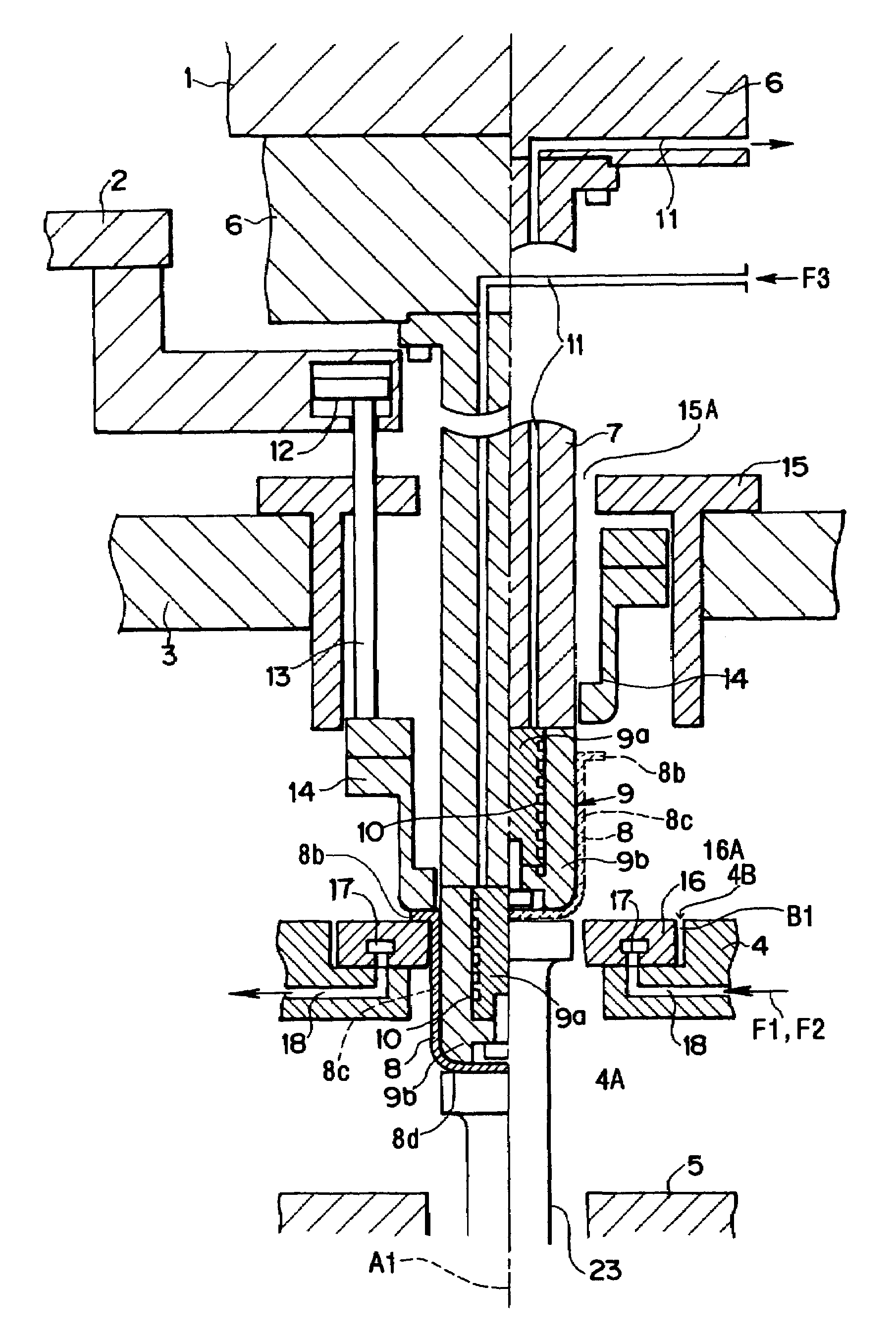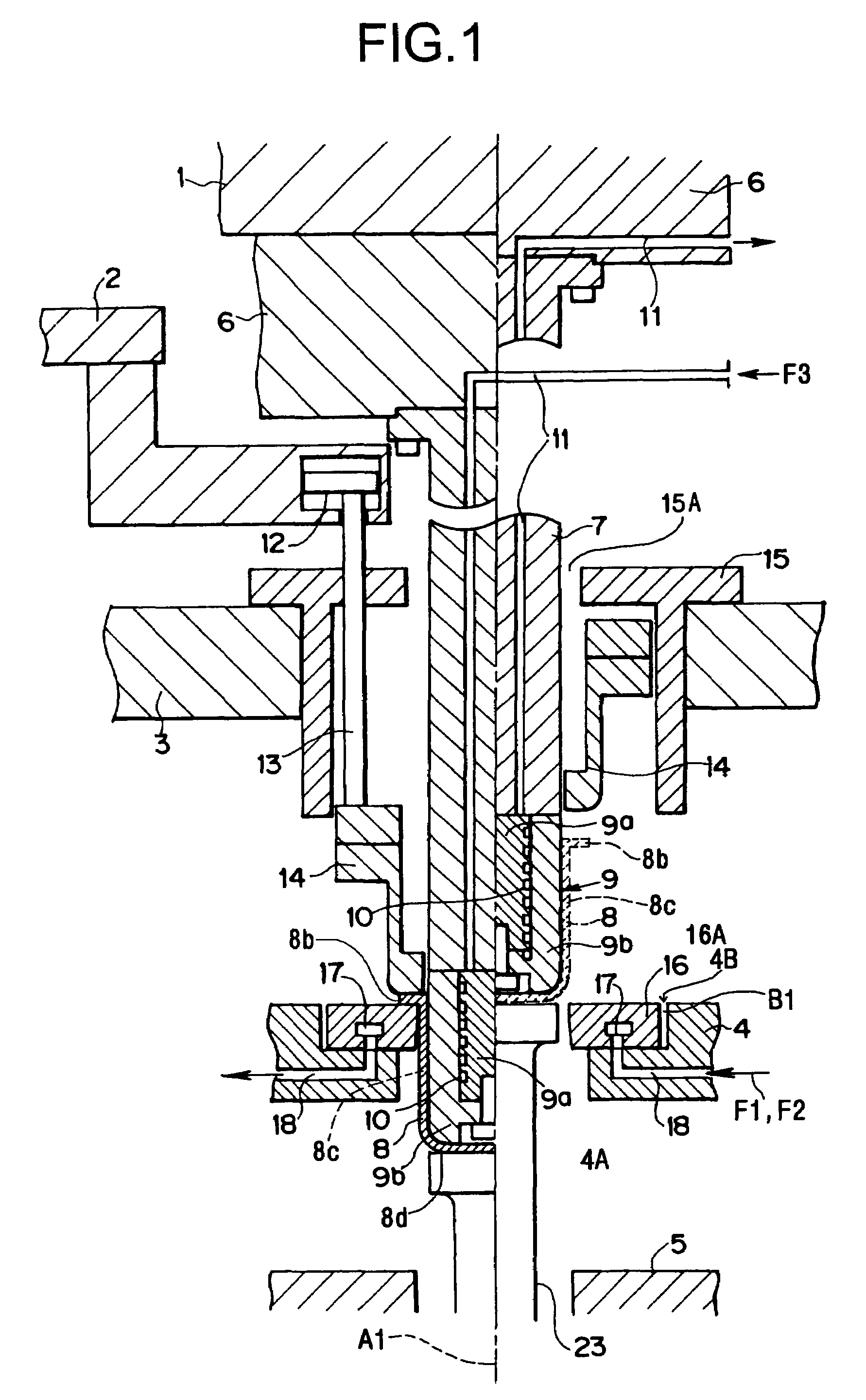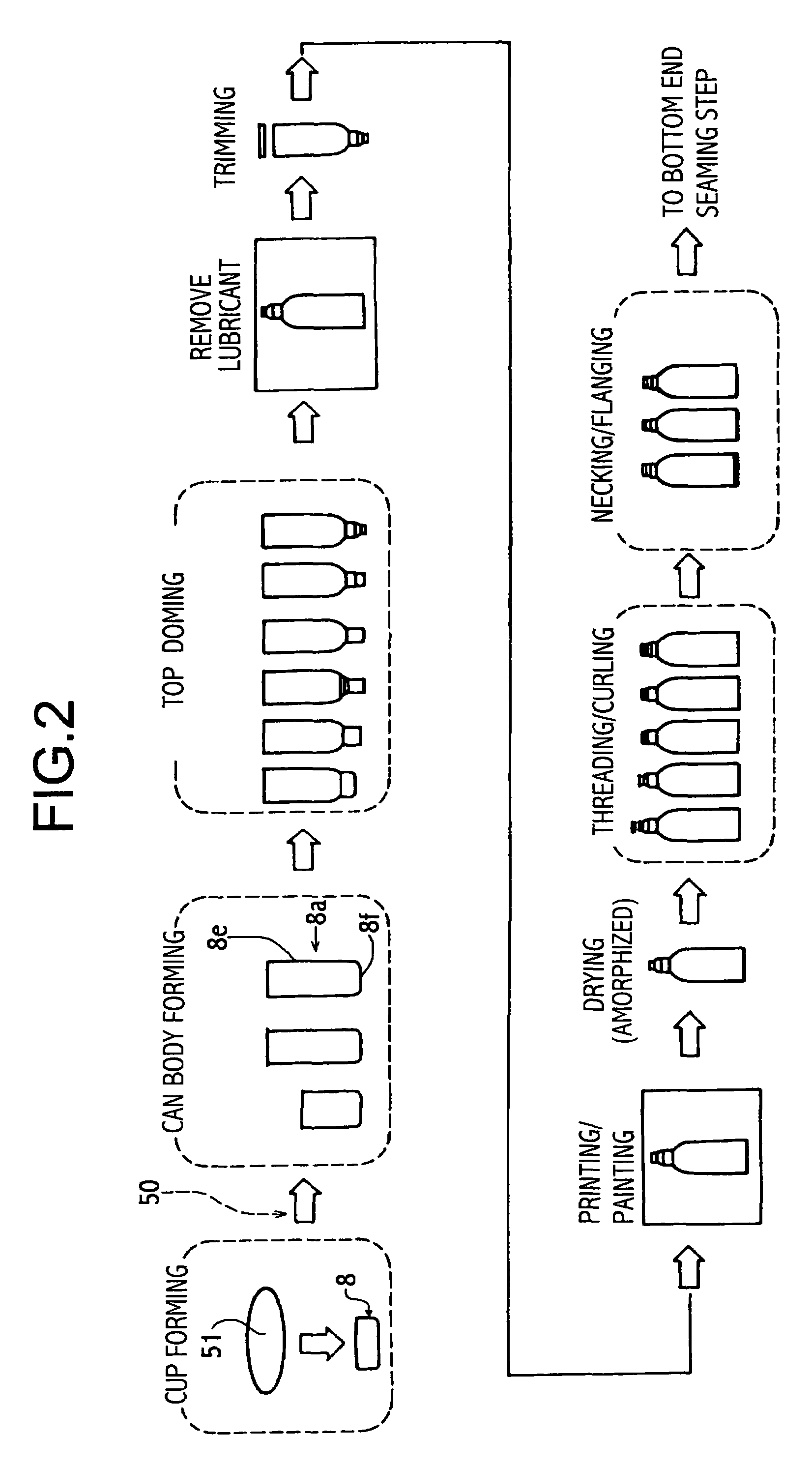Device and method for manufacturing resin coated metal seamless container shell
a technology of seamless cans and devices, which is applied in the direction of manufacturing tools, shaping tools, other domestic objects, etc., can solve the problems of affecting the quality the axial eccentricity between the punch and the die cannot be prevented, and the resin film of the inner face of the can may be damaged
- Summary
- Abstract
- Description
- Claims
- Application Information
AI Technical Summary
Benefits of technology
Problems solved by technology
Method used
Image
Examples
first embodiment
[0065](First Embodiment)
[0066]In the course of the forming process from the aforementioned cup forming step to necking / flanging step, the apparatus and the method according to the present invention can be applied to the can body forming step. FIG. 1 schematically shows an embodiment of applying the invention to the apparatus to be used for drawing / ironing of the can body forming step, which is constructed as a die assembly for double-action pressing. Specifically, there are arranged an inner slide 1 and an outer slide 2 in a vertically movable manner, and an intermediate plate 3 is fixedly arranged below the outer slide 2. A die holder 4 is fixedly arranged below the intermediate plate 3, and held by a die base 5 arranged thereunder.
[0067]A nose holder 6 is fixed to the lower face of the inner slide 1, and a punch-shaft 7 is installed underneath the nose holder 6. The punch-shaft 7 moves vertically along a longitudinal center axis A1, in accordance with the vertical movement of the ...
second embodiment
[0084](Second Embodiment)
[0085]FIGS. 6 and 7 schematically show another embodiment of an apparatus to be used for carrying out the method of the invention by redrawing, the redrawing / ironing or ironing in the can body forming process. In the second embodiment, a construction similar to that of the first embodiment is designated by the common reference numerals.
[0086]There is installed a heat source sleeve 50 on the opening 15A of said blank holder guide 15. This heat source sleeve 50 heats the punch 9 from the outer face side, and is constructed of a cylinder incorporating an electric heater, a cylinder incorporating a built-in electromagnetic induction coil, or a cylinder constructed to blow a warm air or hot air from inside and so on. Here, the heat source sleeve 50 is made to have a length enough to heat the punch 9 positioned in the top dead center.
[0087]Moreover, there is arranged a cooling sleeve 60 below said die 16, for cooling both the punch 9 lowered to the bottom dead cen...
PUM
| Property | Measurement | Unit |
|---|---|---|
| constant temperature | aaaaa | aaaaa |
| constant temperature | aaaaa | aaaaa |
| temperature | aaaaa | aaaaa |
Abstract
Description
Claims
Application Information
 Login to View More
Login to View More - R&D
- Intellectual Property
- Life Sciences
- Materials
- Tech Scout
- Unparalleled Data Quality
- Higher Quality Content
- 60% Fewer Hallucinations
Browse by: Latest US Patents, China's latest patents, Technical Efficacy Thesaurus, Application Domain, Technology Topic, Popular Technical Reports.
© 2025 PatSnap. All rights reserved.Legal|Privacy policy|Modern Slavery Act Transparency Statement|Sitemap|About US| Contact US: help@patsnap.com



